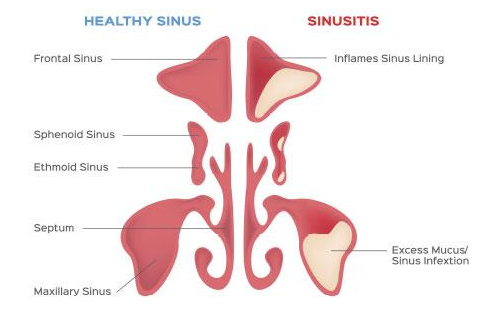How is Allergic Rhinitis Treated?
Allergic rhinitis typically results from two conditions: family history/genetic predisposition to allergic disease and exposure to allergens. Allergens are substances that produce an allergic response.
Children are not born with allergies but develop symptoms upon repeated exposure to environmental allergens. The earliest exposure is through food — and infants may develop eczema, nasal congestion, nasal discharge, and wheezing caused by one or more allergens (milk protein is the most common). Allergies can also contribute to repeated ear infections in children. In early childhood, indoor exposure to dust mites, animal dander, and mold spores may cause an allergic reaction, often lasting throughout the year. Outdoor allergens including pollen from trees, grasses, and weeds primarily cause seasonal symptoms.
The number of patients with allergic rhinitis has increased in the past decade, especially in urban areas. Before adolescence, twice as many boys as girls are affected; however, after adolescence, females are slightly more affected than males. Researchers have found that children born to a large family with several older siblings and day care attendance seem to have less likelihood of developing allergic disease later in life.
What are Allergic Rhinitis Symptoms?
Symptoms can vary with the season and type of allergen and include sneezing, runny nose, nasal congestion, and itchy eyes and nose. A year – long exposure usually produces nasal congestion (chronic stuffy nose).
In children, allergen exposure and subsequent inflammation in the upper respiratory system cause nasal obstruction. This obstruction becomes worse with the gradual enlargement of the adenoid tissue and the tonsils inherent with age.
Consequently, the young patient may have mouth – breathing, snoring, and sleep – disordered breathing such as obstructive sleep apnea. Sleep problems such as insomnia, bed-wetting, and sleepwalking may accompany these symptoms along with behavioral changes including short attention span, irritability, poor school performance, and excessive daytime sleepiness.
In these patients, upper respiratory infections such as colds and ear infections are more frequent and last longer. A child’s symptoms after exposure to pollutants such as tobacco smoke are usually amplified in the presence of ongoing allergic inflammation.




Comments
Post a Comment